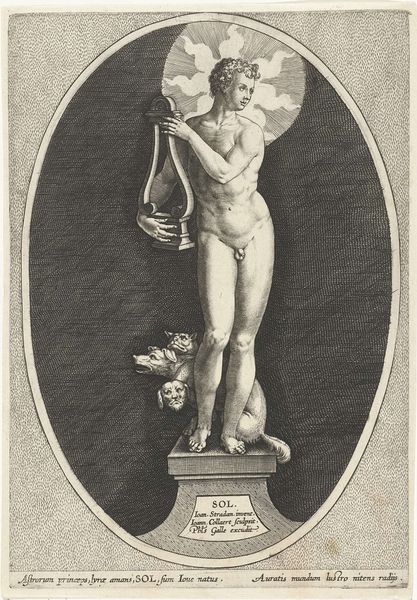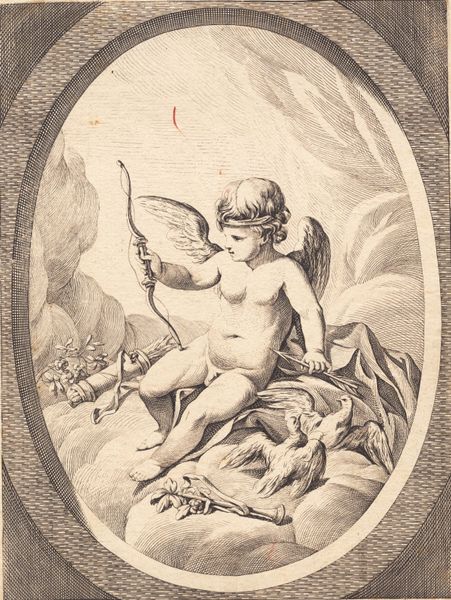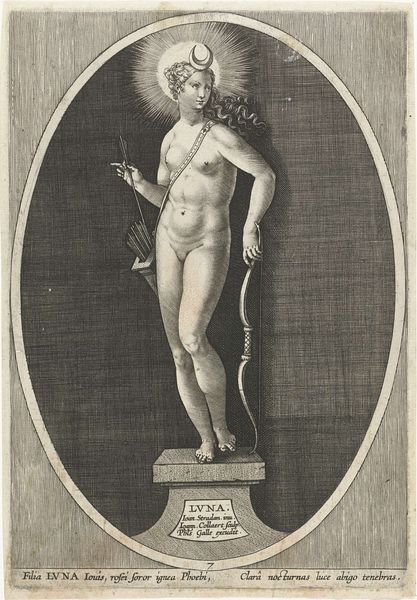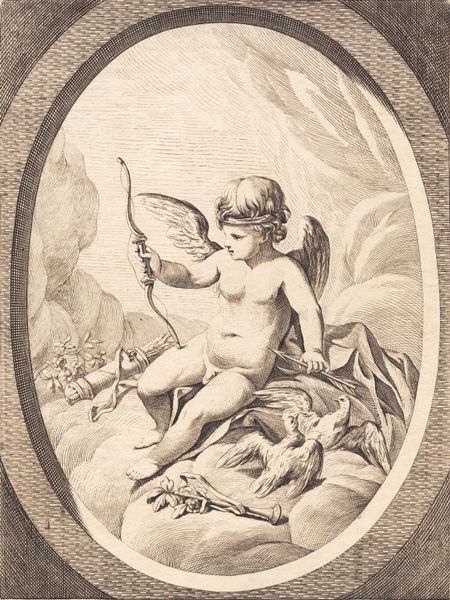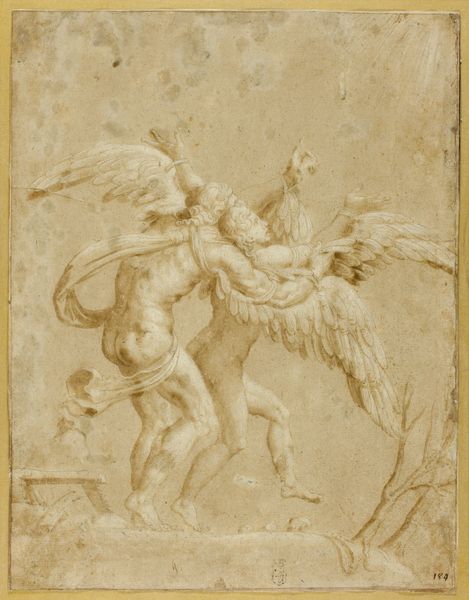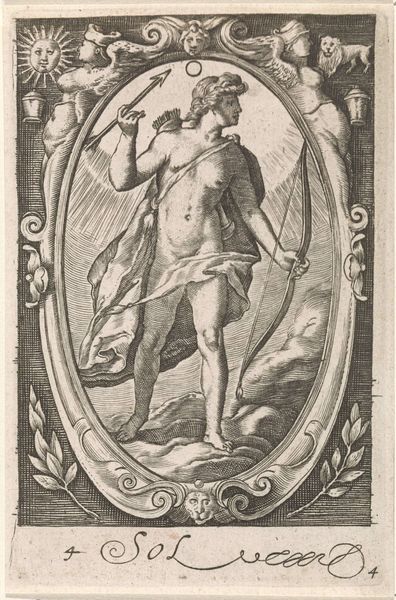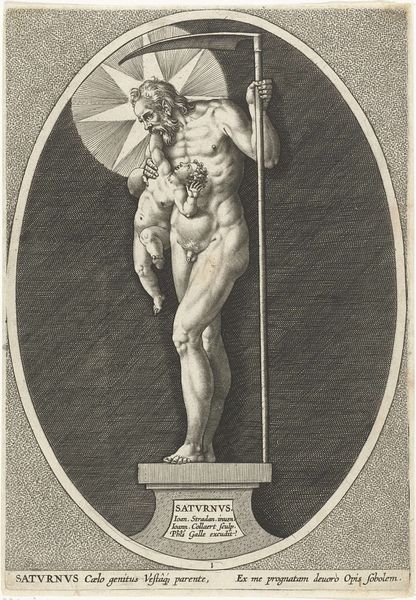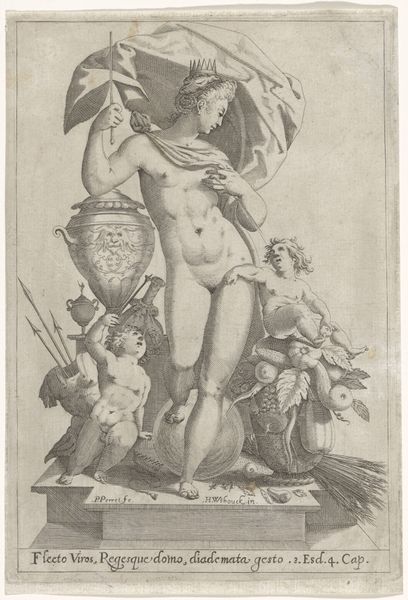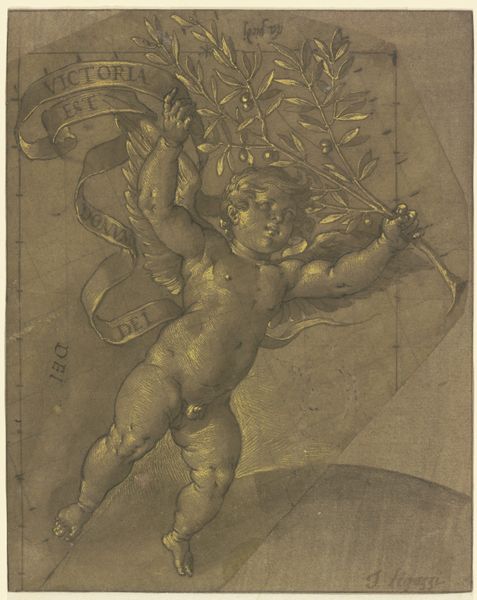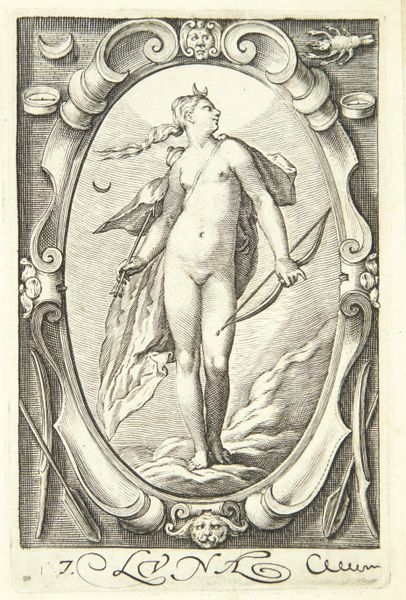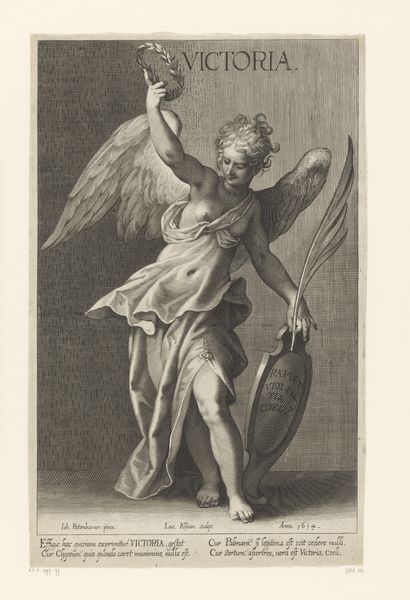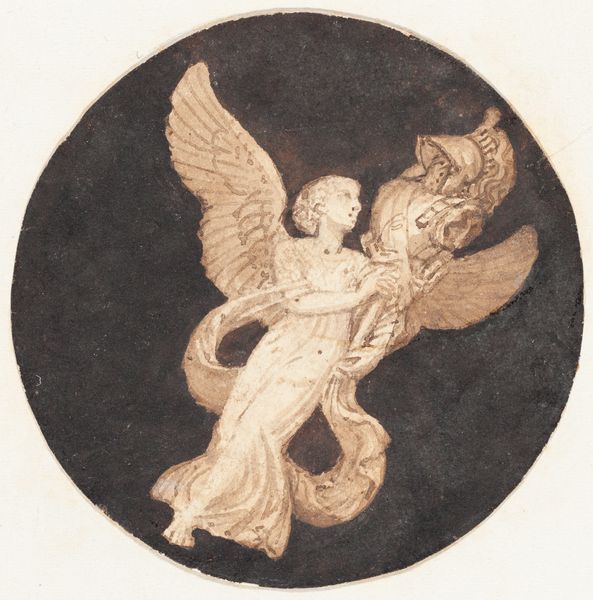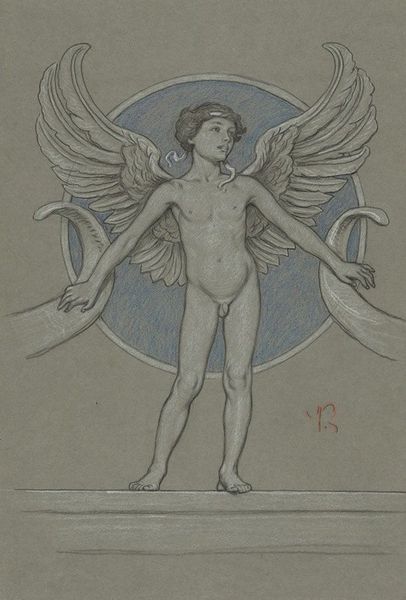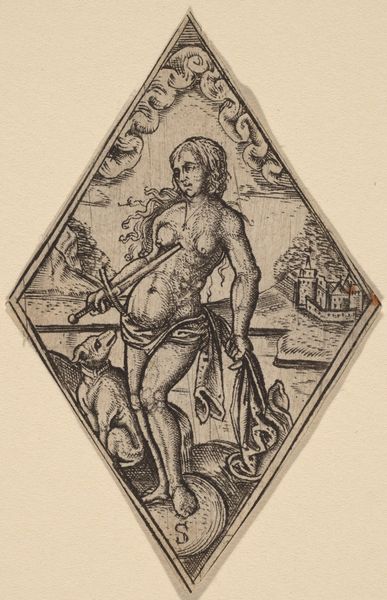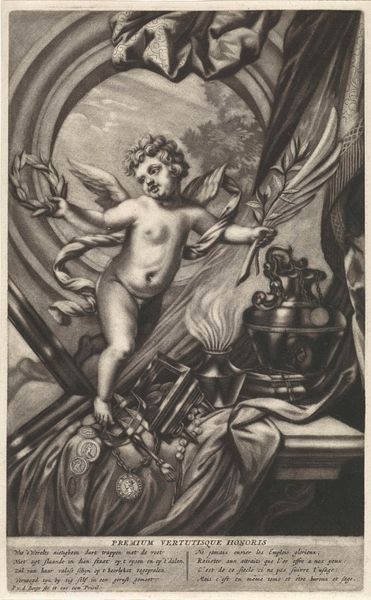![Putto with Arms of Jacques Coëne [reverse] by Bernard van Orley](/_next/image?url=https%3A%2F%2Fd2w8kbdekdi1gv.cloudfront.net%2FeyJidWNrZXQiOiAiYXJ0ZXJhLWltYWdlcy1idWNrZXQiLCAia2V5IjogImFydHdvcmtzLzYyYWNkOTFhLTY4M2UtNDJhZC05ZTc4LTA3NWE3MjNiYjExNi82MmFjZDkxYS02ODNlLTQyYWQtOWU3OC0wNzVhNzIzYmIxMTZfZnVsbC5qcGciLCAiZWRpdHMiOiB7InJlc2l6ZSI6IHsid2lkdGgiOiAxOTIwLCAiaGVpZ2h0IjogMTkyMCwgImZpdCI6ICJpbnNpZGUifX19&w=3840&q=75)
oil-paint
#
allegory
#
oil-paint
#
figuration
#
oil painting
#
italian-renaissance
#
nude
Dimensions: painted surface: 54.4 x 32.9 cm (21 7/16 x 12 15/16 in.) overall (panel): 54.9 x 33.3 cm (21 5/8 x 13 1/8 in.) framed: 63 x 41.8 x 5.7 cm (24 13/16 x 16 7/16 x 2 1/4 in.)
Copyright: National Gallery of Art: CC0 1.0
Editor: So, here we have Bernard van Orley’s “Putto with Arms of Jacques Coëne [reverse]” from around 1513, done in oil. It's... certainly a choice to have a winged baby holding a coat of arms. The whole scene looks a little stiff, like a staged photograph. What strikes you when you look at it? Curator: The materiality interests me most. Oil paint, yes, but think of the pigments. Where did van Orley source the blues for that shield, the gold for the shell? These were not mass-produced materials. The acquisition of such luxury goods speaks volumes about the social standing of both the artist and his patron. And what about the canvas itself? Linen? Hemp? How was it prepared, stretched? These are the labor intensive steps often overlooked. Editor: So, you’re saying the *things* that went into making the painting are as important as what it depicts? Curator: Absolutely. This wasn't just artistic inspiration; it was an economic act. Think about the apprentice who likely ground those pigments. The social structure is built right into the brushstrokes. It even looks like he had difficulty achieving perfect flatness. We’re accustomed to pristine images but seeing those imperfections suggests something else: labor. What kind of relationship did the artist have with those crafting materials? Editor: That's really different from how I usually look at art! It never occurred to me to consider where the colours *came* from, like literally from the ground, or to think about who might have made the canvas itself. Curator: It encourages a richer understanding, doesn't it? We've moved beyond the single artistic genius narrative. Editor: Definitely. It highlights the social relations inherent in artistic production. Thanks, that really shifts my perspective!
Comments
No comments
Be the first to comment and join the conversation on the ultimate creative platform.
